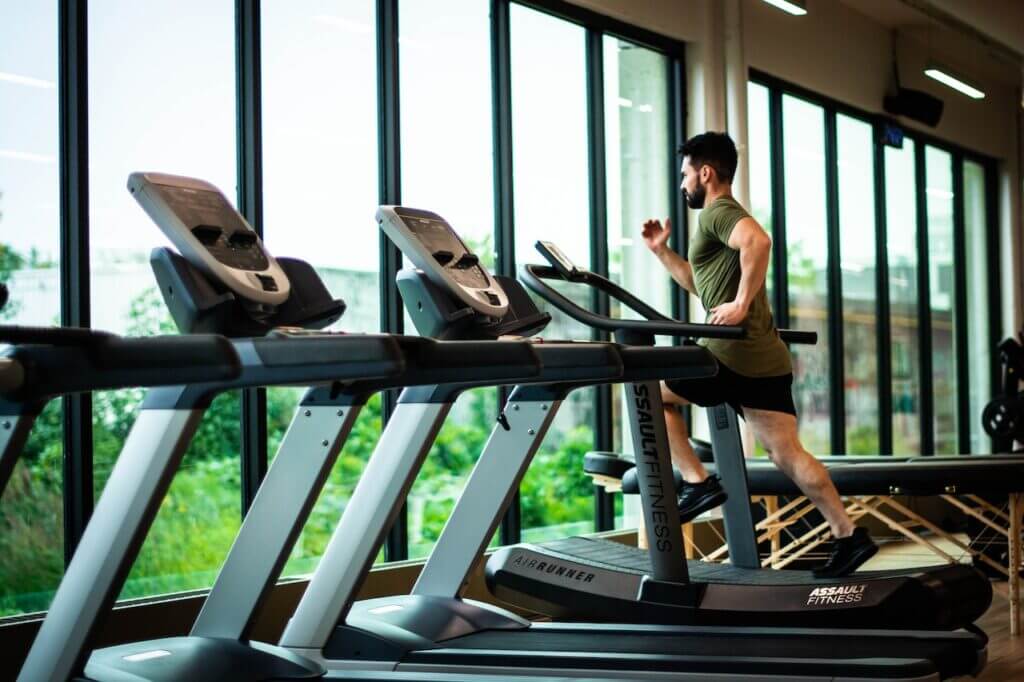Treadmills are a popular exercise machine for many people who want to get their daily dose of cardio indoors. But have you ever wondered whether or not you should swing your arms while walking or running on a treadmill?
Some people swear by the benefits of swinging their arms, while others avoid it altogether. This begs the question: should you swing your arms on a treadmill?
In this article, we’ll take a closer look at the benefits and risks of swinging your arms on a treadmill, as well as provide some tips on how to do it properly. So, whether you’re a seasoned gym-goer or a treadmill newbie, read on to find out everything you need to know about swinging your arms on a treadmill.
Should I swing my arms on a treadmill?

The answer to whether you should swing your arms on a treadmill is not a simple yes or no. Swinging your arms while walking or running on a treadmill can provide some benefits, but it also comes with some risks.
On the one hand, swinging your arms engages more muscles in your upper body, increasing your overall calorie burn and providing a full-body workout. It can also improve your balance and coordination, helping you to maintain proper form while exercising.
On the other hand, swinging your arms on a treadmill can increase your risk of injury, particularly if you over-swing your arms or swing them too aggressively. It can also lead to poor posture, as you may hunch your shoulders or lean too far forward. This can cause discomfort or even pain in your neck, shoulders, and back.
If you do decide to swing your arms on a treadmill, it’s important to do so properly. Keep your arms at a 90-degree angle, with your elbows close to your body, and move your arms naturally without over-swinging.
However, if swinging your arms causes discomfort or pain, or if you have a history of upper body injuries, it may be best to avoid it altogether.
There are also alternatives to swinging your arms that you can consider, such as holding onto the treadmill’s handrails or using hand weights. These options can provide a similar full-body workout without the added risk of injury.
How to Properly Swing Arms on a Treadmill
If you choose to swing your arms while walking or running on a treadmill, it’s important to do so properly to avoid injury and maximize the benefits. Here are some tips on how to properly swing your arms on a treadmill:
1. Keep your arms at a 90-degree angle
To swing your arms effectively, you should keep your elbows bent at a 90-degree angle. This allows you to engage your arm muscles and generate more power with each stride. Avoid fully extending your arms, as this can cause strain on your joints and muscles.
2. Keep your elbows close to your body
Along with keeping your arms bent, you should also keep your elbows close to your body. This helps to maintain proper form and prevents you from over-swinging your arms, which can cause discomfort and lead to poor posture.
3. Move your arms naturally
Your arm swing should be a natural and relaxed movement that flows with your stride. Avoid swinging your arms too forcefully or rigidly, as this can lead to unnecessary tension in your upper body.
4. Avoid over-swinging your arms
Over-swinging your arms can put excessive strain on your shoulders and back, leading to discomfort or even injury. To prevent this, swing your arms no higher than shoulder level and keep your movements controlled.
5. Focus on your breathing
Proper breathing is key to maximizing the benefits of swinging your arms on a treadmill. As you swing your arms, breathe deeply and exhale with each stride. This can help to increase your lung capacity and oxygen intake, providing more energy and stamina for your workout.
By following these tips, you can properly swing your arms on a treadmill and enjoy the full-body workout benefits without risking injury or discomfort. However, if you experience any pain or discomfort while swinging your arms, it’s important to stop immediately and seek medical attention if necessary.
For a better and more detailed explanation of the importance of arm swing, while running, you can read this article we wrote. It will help you improve your arm swings and overall running performance.
Is it better to hold handles on a treadmill?

Whether or not it is better to hold the handles on a treadmill depends on your individual needs and goals. Holding onto the handles can provide additional support and balance, which may be helpful for individuals who are new to using a treadmill or those with balance issues.
However, holding onto the handles can also alter your posture and stride, which may affect the muscles you engage and the overall effectiveness of your workout. It is important to note that if you hold onto the handles while walking or running, you should avoid leaning forward or using the handles to pull yourself forward, as this can cause strain on your upper body and reduce the intensity of your workout.
Additionally, if you are using the heart rate monitor on the treadmill, holding onto the handles can affect the accuracy of your readings.
Ultimately, the decision to hold onto the handles or not comes down to personal preference and individual needs. If you are unsure, you may want to try both methods and see what feels most comfortable and effective for you.
Conclusion
In conclusion, whether or not to swing your arms on a treadmill ultimately depends on your personal preference and fitness goals. While it can provide numerous benefits such as engaging more muscles, increasing calorie burn, and improving balance and coordination, it also poses risks such as injury, poor posture, and discomfort.
To swing your arms correctly, you should keep your arms at a 90-degree angle, your elbows close to your body, and move your arms naturally without over-swinging. Overall, it’s important to listen to your body and make adjustments accordingly to achieve a safe and effective workout.


